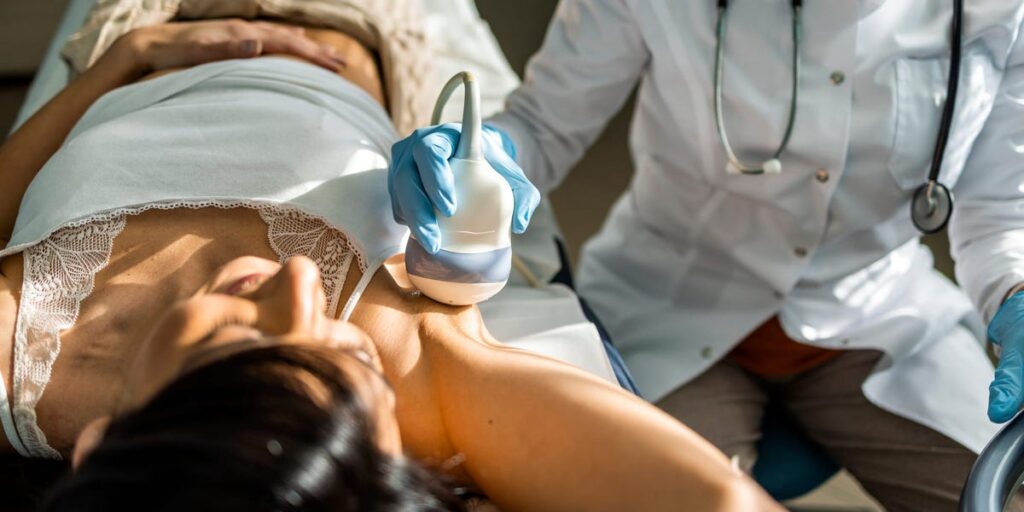- More women under 50 are getting breast cancer, an American Cancer Society report found.
- The reasons are complex, but breastfeeding and fertility may play a small role on a population-wide level.
- Deaths caused by breast cancer have fallen, the report found, and if caught early, the disease is often treatable.
More women under 50 are getting breast cancer in the US, and lifestyle factors such as not breastfeeding and having children later in life may be contributing, a cancer expert told Business Insider.
Being physically inactive, having a poor diet, drinking alcohol, and smoking are all risk factors for breast cancer, but the rise in younger women in particular might be linked to fertility, said Dr. Ahmedin Jemal, co-author of a new American Cancer Society report on the prevalence of the disease published on Tuesday.
Other cancers, including colon and cervical, are also rising in younger people, putting extra stress on the so-called sandwich generation, who are of working and reproductive age and often have caring responsibilities for both young children and aging parents.
Breast cancer deaths are dropping, but cases are rising in younger women
Breast cancer deaths declined by 44% between 1989 and 2022, translating to 517,900 fewer deaths, largely due to earlier detection and advances in treatment, the report found. But rates of breast cancer rose by 1% each year between 2012 and 2021, with the rise being steepest for women younger than 50 at 1.4%.
It’s important to note, however, that the absolute risk for this group is still low. Only around 6.5 women in their 20s out of 100,000 will receive a breast cancer diagnosis, the report found.
Jemal, who is also senior vice president of Surveillance and Health Equity Science at the ACS, called this increase “concerning” but added that the disease is often treatable and prevention is key.
“Prevention of risk factors substantially reduces the risk of breast cancer,” he said, as well as following government guidelines to have a mammogram every two years starting at age 40.
The ACS report, published in CA: A Cancer Journal for Clinicians, used data on cancer rates and deaths from the CDC, National Cancer Institute, and National Center for Health Statistics.
Breast cancer is the second most common cancer in US women. The report estimated that in 2024, around 310,720 new cases will be diagnosed, and around 42,250 women will die from the disease. Men can also get breast cancer, although it is rare.
The link between breast cancer and having children is complex, but certain factors, like the age at which a woman has a child, can impact the risk, Jemal said.
Dr. Hannah Moody, head of science and health education at the charity Breast Cancer UK, sought to allay the fears of women who fall into those categories.
“Yes, breastfeeding and having children younger may help to reduce your risk of breast cancer. But that alone isn’t why rates are increasing,” she said, adding that lifestyle and environmental factors also play a role in the increased number of cases.
However, documenting such trends can help experts such as epidemiologists understand cancer rates at a population-wide level, and shouldn’t be a cause for concern.
Breastfeeding
Breastfeeding has a protective effect against breast cancer, Jemal said, but rates have declined in the US over time.
The CDC recommends exclusively breastfeeding babies for the first six months of their lives and breastfeeding alongside complementary foods for at least a year. But only one in four US infants were exclusively breastfed for more than six months in 2019, a 2023 study published in Frontiers in Public Health found.
The risk of breast cancer decreases by around 4% for every 12 months of breastfeeding, according to Breast Cancer UK.
A possible explanation is that breastfeeding reduces a person’s total number of lifetime menstrual cycles. The more cycles they have, the greater their exposure to the hormones estrogen and progesterone, which are linked to a higher breast cancer risk, according to the ACS.
Not having children or having children later in life
More and more people are deciding not to have children or to have them later in life, as shown by the rise in DINKs.
According to a 2022 report from the US Census Bureau, fertility rates among women in their 20s fell by 43% between 1990 and 2019, while those of women ages 35 to 39 increased by 67%.
And in 2023, 47% of US adults under 50 without children said they were unlikely to ever have them, compared to 37% in 2018, according to a Pew Research Center survey.
This drop in fertility rates may have contributed to the rise in younger women getting breast cancer because having children later in life is an established risk factor, Jemal said.
Women who have not had children or who had their first child after age 30 have a slightly higher breast cancer risk overall, according to the ACS. Meanwhile, having many pregnancies and becoming pregnant at a young age reduces breast cancer risk.
Read the full article here
















